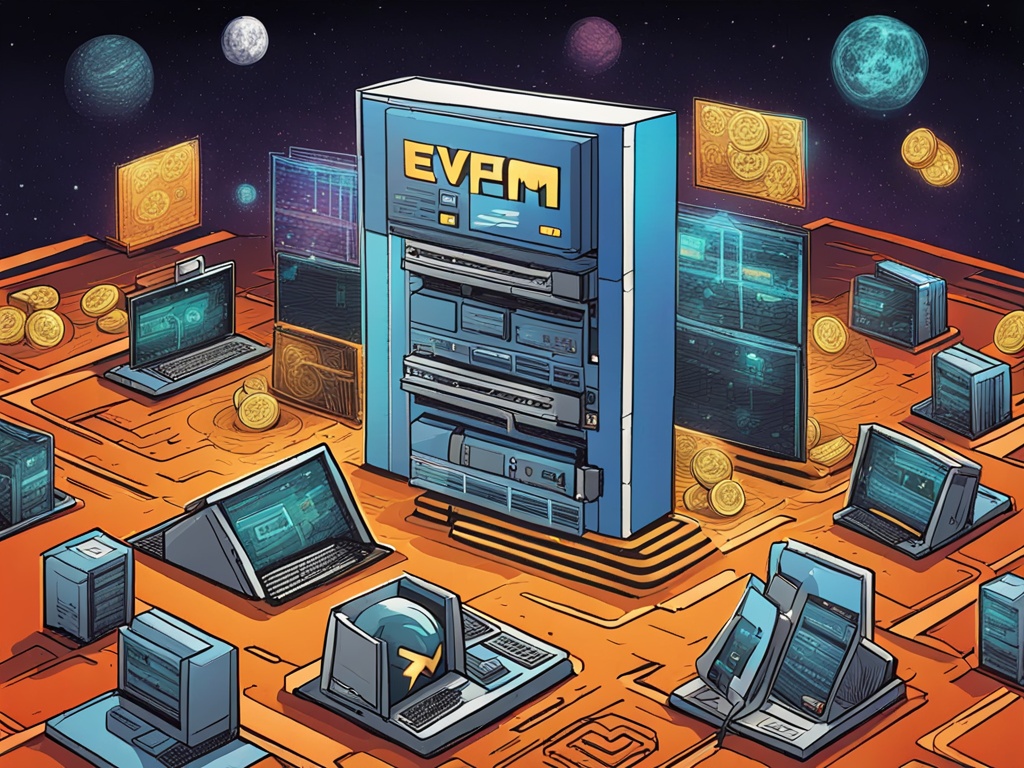Understanding the Challenges and Innovations in EVM Storage 🚀
This year, you’re invited to dive into the complexities and potential advancements surrounding the Ethereum Virtual Machine (EVM) storage layer. As the foundation for managing critical data, including smart contracts and user accounts, the EVM faces several challenges, primarily due to rising gas costs and increasing instances of state bloat. This discourse will focus on some pioneering solutions and methods that aim to optimize storage systems within the blockchain realm.
Key Limitations of the EVM’s Storage Framework ⚙️
The EVM’s architecture is fundamentally responsible for retaining persistent data that persists even after a smart contract has completed execution. Various elements comprise this storage layer, including program code, storage components, and overall machine states. Nevertheless, the EVM’s dependence on a modified Patricia Merkle Tree (MPT) for data retention introduces complexities in computation and higher gas costs, especially concerning write operations. As the blockchain state evolves and expands, nodes demand additional resources, making it increasingly difficult to participate using conventional hardware.
Strategies to Tackle EVM Storage Issues 💡
The cryptocurrency community is zealously investigating approaches to mitigate these storage challenges. One promising solution involves adopting alternative data structures such as Verkle Trees, which promise smaller proof sizes and expedited verification processes. Ethereum’s active community is also analyzing various improvements via Ethereum Improvement Proposals (EIPs) including EIP-2929 and EIP-2930. These proposals aim to refine state access patterns and recalibrate gas cost calculations.
- Adoption of Verkle Trees: These data structures aim to streamline proof processes, making transactions more efficient.
- Improvements through EIPs: EIP-2929 and EIP-2930 are designed to make state access and gas costs more manageable.
In conjunction with these efforts, various other blockchain platforms explore cutting-edge storage strategies. For example, Solana utilizes a flat account model designed to simplify access to data and enhance transaction processing capabilities. By employing memory-mapped account storage, it strives to minimize latency and fine-tune read operations.
Fresh Perspectives from Other Blockchains 🔍
Looking beyond Ethereum, blockchains like Solana and Sui are implementing distinctive methods for efficient state management. The flat account model adopted by Solana provides direct access to account data, essentially negating the complexities that typically accompany tree data structures. On the other hand, Sui implements an object-centric model that utilizes the Move programming language, fostering effective serialization and allowing for parallel transaction processing.
- Solana: Its direct access to account data simplifies transaction flows.
- Sui: The object-centric approach aids in both efficient serialization and simultaneous transaction execution.
Moreover, Sei has proposed an innovative solution by separating the state commitment from storage to enhance efficiency. Utilizing MemIAVL for in-memory operations, Sei targets optimized historical queries and aims to minimize disk I/O. This strategy effectively elevates read speeds, particularly concerning data essential for consensus operations.
Summing Up the Innovations in Blockchain Storage 🌐
As the EVM grapples with storage-related challenges such as soaring gas fees and state clutter, the concept of innovative solutions remains crucial. Through the exploration of alternative data structures, supervision over consensus activities, and efficient storage methodologies, the blockchain community can profoundly ameliorate these issues. Continuous research and development promise a future where blockchain infrastructures are both scalable and decentralized, paving the way for a more resilient application of blockchain technology.
Hot Take: The Future of EVM Storage Solutions 🔥
The ongoing exploration into innovative storage solutions will undeniably shape the landscape of blockchain technology. While challenges like state bloat and high gas costs pose obstacles, collaboration within the blockchain community and the adoption of creative strategies could lead to significant advancements. As progress continues, the prospects for a scalable and efficient blockchain network not only become more tangible but also more essential for the evolution of decentralized applications.





 By
By
 By
By


 By
By
 By
By